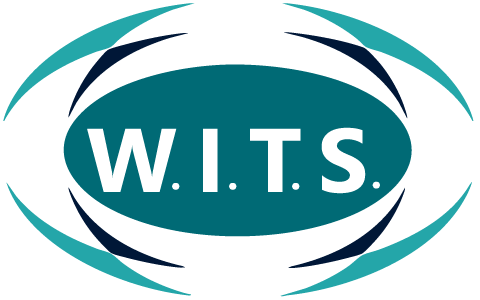
Effective Learning Strategies for Today’s Generation
Are you trying to internally train your staff each month? We can help. Education is continually evolving, and learning strategies that worked for previous generations may not always address the needs and motivations of today’s learners. Gen Z college students and young professionals, in particular, bring a fresh perspective to how they engage with knowledge. Post-pandemic shifts in priorities, greater technological integration, and a focus on personal and career growth are changing what effective learning looks like. W.I.T.S understands this concept and has enacted most of the educational experiences below. No matter what your generation, you can move forward with your purpose, your way.
With decreasing enrollments since the pandemic, understanding what motivates learners and how to create strategies that resonate with these audiences is critical.
Understanding the Modern Learner
What motivates learning today?
For Gen Z and young professionals, motivation stems from a sense of purpose. They are drawn to educational experiences that are:
- Career-focused: Programs that offer direct links to career growth and skill-building are highly valued.
- Community-driven: Learning experiences that promote a sense of belonging and collaboration are seen as immensely valuable.
- Efficient and Flexible: This generation values convenience and adaptability, so it’s important to offer options that fit into busy, demographically diverse lifestyles.
Fostering happiness and satisfaction as a learner is also key. A "happy learner" is one who feels supported, empowered, and sees clear value in their efforts and growth.
Why Are Enrollments Down Since COVID?
The COVID-19 pandemic disrupted education on a massive scale. Many students paused or forewent traditional learning paths, leading to decreased enrollments. Key reasons include:
- A reevaluation of the cost-benefit ratio of formal education.
- Increased availability of alternative learning options such as online certifications, short courses, and upskilling platforms.
- Growing emphasis on work-life balance, leading many young people to opt for flexible career paths and digital nomad lifestyles.
To engage these learners again, educational institutions and platforms must align with their evolving priorities.
Effective Types of Learning for Today’s Generation
1. Self-Paced Learning
Applications like Coursera and Khan Academy have demonstrated how much young learners value the ability to work at their own speed. Self-paced learning enhances flexibility, letting students absorb information on their terms while balancing other responsibilities.
How to implement:
- Develop online courses available anytime, anywhere.
- Incorporate multimedia elements like videos, animations, and simulations to keep learners engaged.
2. Hands-On Learning
Experiential learning has never been more important. Internships, workshops, and real-world projects give learners practical experience that builds both skills and confidence. Programs involving partnerships with leading companies or community-based projects add immense value.
How to implement:
- Strengthen ties between classrooms and industries.
- Incorporate practical projects and mentorship opportunities.
3. Gamification in Learning
Gamification taps into Gen Z's competitive and interactive nature. Earning badges, completing levels, or participating in challenges can turn mundane topics into exciting learning experiences.
How to implement:
- Integrate gamified experiences within e-learning platforms.
- Reward achievements to build a sense of progression and accomplishment.
4. Social and Collaborative Learning
Young learners thrive in environments where they can share experiences, ideas, and achievements with their peers. From group projects to discussion forums, collaboration builds community and understanding.
How to implement:
- Host online forums and virtual study groups.
- Facilitate live workshops or webinars that promote audience interaction.
5. Microlearning
Attention spans today are shorter, and students often prefer bit-sized nuggets of knowledge. Microlearning delivers focused and actionable content in digestible formats like short videos or infographics.
How to implement:
- Develop micro-modules that can be consumed in 3-10 minutes.
- Use mobile apps and platforms to deliver content efficiently.
6. Learning-Driven Technology
The role of technology in learning cannot be understated. Virtual Reality (VR), Artificial Intelligence (AI), and Augmented Reality (AR) are creating exciting new ways to learn. These tools make concepts come alive and accommodate various learning styles better than traditional textbooks.
How to implement:
- Offer VR simulations for visual learners.
- Use AI to customize learning paths based on individual strengths or challenges.
The Way Forward
For educational institutions and organizations to adapt to these trends:
- Focus on Career Outcomes
Highlighting clear pathways from learning to employment helps young learners see the value of their education. Tools like career placement programs and industry partnerships can foster this sense of purpose.
- Create a Sense of Community
Platforms like NIRSA demonstrate the power of fostering connections among learners. Promoting spaces for networking, shared experiences, and emotional well-being promotes satisfaction and retention.
- Expand Flexibility
With the rise of online platforms, flexibility in when and how learning happens is a standout need. Hybrid models, accessible learning tools, and even asynchronous participation make a significant impact.
- Use Engaging Strategies
A mix of collaborative learning, gamified experiences, and hands-on projects enhances engagement while providing skills for real-world settings.
Final Call
Education today is less about rigid programs and more about meeting learners where they are while preparing them for the challenges ahead. Young professionals and Gen Z demand experiences that align with their ambitions, schedules, and need for fulfillment.
Want to uncover strategies to help your institution stand out? Learn more with W.I.T.S. , NIRSA in connecting with today’s learners or visit CECU to explore success stories and tailor solutions for modern education.
Together, we can support learners in shaping their futures!
